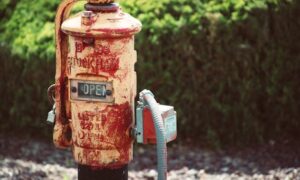Introduction
A sump pump is a humble hero in the world of home maintenance. It silently stands by, ready to protect your basement or crawl space from the perils of flooding. However, like all mechanical devices, sump pumps have a finite lifespan, and over time, they can become less reliable. Ignoring the signs of a failing sump pump can lead to costly water damage in your home. In this article, we will discuss four critical warning signs that indicate your sump pump needs replacing. Recognizing these signals by referring this great portal can save you from potential disasters and keep your basement dry.
- Frequent Cycling
One of the most apparent warning signs that your sump pump may need replacing is frequent cycling. Sump pumps are designed to turn on when the water level in the sump pit reaches a certain threshold. They then pump the excess water out of the pit and away from your home’s foundation. However, if you notice that your sump pump is cycling on and off rapidly, it could be a sign of trouble.
Frequent cycling, also known as short-cycling, can occur for several reasons. One common cause is a malfunctioning float switch, which is responsible for activating the pump. If the float switch is stuck or damaged, it can lead to erratic pump behavior. Additionally, a sump pump that is too small for the volume of water it needs to handle may also short-cycle as it struggles to keep up with the inflow of water.
Short-cycling not only puts unnecessary strain on your sump pump but also reduces its efficiency. Over time, this can lead to premature wear and tear, ultimately shortening the pump’s lifespan. If you observe frequent cycling, it’s essential to have your sump pump inspected by a professional to determine the cause and whether it needs replacing.
- Unusual Noises
Sump pumps are typically designed to operate quietly in the background, so if you start hearing unusual noises coming from your sump pump, it’s a cause for concern. Common abnormal sounds include grinding, rattling, or squealing. These noises may indicate various issues, such as a damaged impeller, motor, or bearing.
The impeller is a critical component of the sump pump responsible for moving water out of the pit. If it becomes clogged or damaged, it can make grinding or rattling sounds as it struggles to function properly. Likewise, a malfunctioning motor or worn-out bearing can lead to unusual noises during operation.
Ignoring these sounds and assuming they will go away is not advisable. Unusual noises often signify impending pump failure, and continuing to run a sump pump in this condition can result in a complete breakdown when you least expect it. To avoid a potential basement flood, it’s wise to consult a professional if you notice any abnormal sounds coming from your sump pump.
- Reduced Pumping Capacity
Sump pumps are rated based on their pumping capacity, typically measured in gallons per minute (GPM). This rating indicates how much water the pump can move in a given time frame. If you notice that your sump pump is struggling to keep up with even moderate amounts of water, it’s a clear sign that something is amiss.
Reduced pumping capacity can occur for various reasons. Over time, silt, debris, and mineral deposits can accumulate in the sump pit and clog the pump’s intake or discharge pipes. This buildup reduces the pump’s efficiency and can lead to decreased pumping capacity.
Additionally, wear and tear on the pump’s internal components, such as the impeller or motor, can also result in reduced performance. If your sump pump is no longer capable of handling the volume of water it once did, it’s time to consider replacement.
Attempting to extend the life of an underperforming sump pump can have dire consequences in the event of heavy rain or a sudden influx of water. To ensure your home remains protected, it’s best to replace a pump that can no longer perform its job adequately.
- Age of the Sump Pump
Like most mechanical devices, sump pumps have a finite lifespan. The average sump pump lasts anywhere from 7 to 10 years, depending on factors such as usage frequency, maintenance, and the quality of the pump. If you’re unsure of your sump pump’s age, it’s essential to find out, as an aging pump is more likely to fail when you need it most.
Even if your sump pump seems to be operating correctly, it’s a good idea to consider replacement if it’s approaching or past its expected lifespan. This proactive approach can save you from the inconvenience and expense of a sudden failure during a heavy rainstorm or spring thaw.
Upgrading to a new sump pump model can also provide you with the latest advancements in technology, potentially increasing your home’s flood protection. Newer pumps may feature improved energy efficiency, battery backup systems, and enhanced durability, all of which can contribute to better performance and peace of mind.
Conclusion
Your sump pump is a critical line of defense against basement flooding and water damage. Recognizing the warning signs of a failing sump pump can help you avoid potential disasters and costly repairs. If you notice frequent cycling, unusual noises, reduced pumping capacity, or your sump pump is approaching the end of its expected lifespan, it’s essential to have a peek here to take action promptly.
Replacing your sump pump when necessary ensures that your home remains protected, and you can continue to enjoy a dry, secure basement or crawl space. Don’t wait until it’s too late; prioritize the maintenance and replacement of your sump pump to safeguard your home from water-related woes.



































